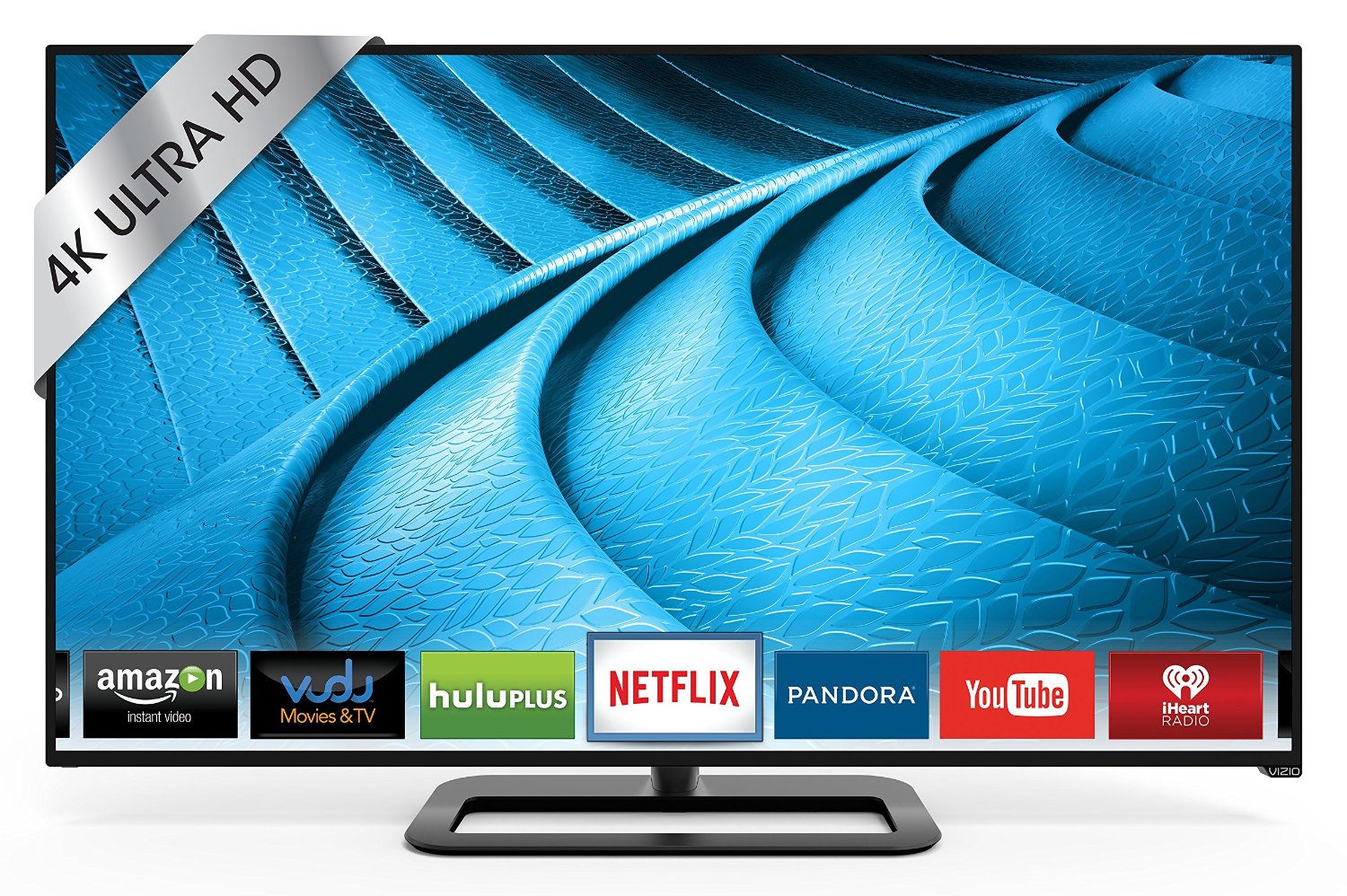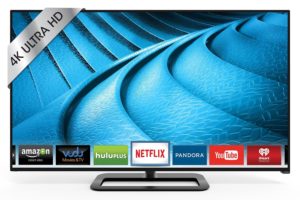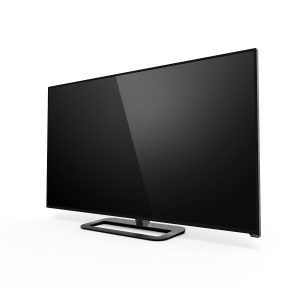50″ VIZIO P502ui-B1 4K UHD LED TV via Amazon
VIZIO P502ui-B1 is a 50 inch 4K Ultra HD Smart LED HDTV with 240Hz effective refresh rate (120Hz real panel) as one of the least expensive 4K TVs since it’s been out on the market. It appears to be the most value packed television for the year 2014 and shows us it is possible to make a 4K TV at an affordable price that most customers can afford. Obviously it has its pros and cons like any product and given that it is such a low cost TV but let’s see first show Vizio managed to create a great 4K TV at such a great price.
What we first noticed with the Vizio P502ui-B1 or the larger screen versions of the P series is they are pretty basic looking TVs (they look very much like the M series), overall look of the TV is not really special and Vizio seems to have cut the costs on everything other than performance- the picture quality is quite good. You have the slim black bezel with silver edges, rounded corners and a matching silver base that doesn’t swivel, it looks and feels like a low profile unit with a subtle and OK design. For performance, the full array backlight with 64 Active LED Zones is the feature that stands out most and this greatly improves the dynamic performance and offers superior backlight uniformity (but this makes the TV look thicker than other LED TVs from the side). It comes with a total of three processors: A dual core processor handling the Smart TV platform, a six core processor that handles 4K motion processing and a quad core for upscaled motion. Although there is a bit of pixel clustering and noise with 1080p content and you can kind of tell it is upscaled, looks quite all right on this TV.
Colour production is its weak point with less saturation and this is more noticeable in a brighter room and can’t be compared to the very expensive Sony 4K TVs. It is a smart TV (with the Vizio Internet Apps Plus Platform- that is what it is called) that covers the basics like Youtube, Hulu, Netflix and Amazon Instant Video so you will not find lots of apps like you do on an LG or Samsung Smart TV- this is another area Vizio saved money on, and if you do not need all those extra Smart TV features why pay? But you still have the very fast 802.11ac wireless for proper UHD streaming. So coming back to the picture and performance, you have very deep blacks and superior contract ratios but at times a little too high as it seems to highlight shadows higher than normal on the 60 and 70 inch versions so perhaps it may be better to stick to 55 or 50 inch for picture quality. Video processing is great and it enhances details rather sharply- perhaps a little too sharp and making picture look slightly unrealistic, so you are offered pretty good picture quality but not the best on the market, not like some 4K TVs that cost 2-3 times more. It has two speakers and sound quality is all right- not the best but good and you may prefer to use a sound bar- it is optional and how picky you are about sound.
Other than performance, connectivity is another area Vizio P series 50 inch TV is a winner. It has a total of 5 x HDMI ports- four of them are version 1.4 supporting 4K sources up to 30 Hz and the 5th HDMI is 2.0 and supports 1080p resolution at 120Hz which is aimed at gaming (input lag is very low in games) and 4K at 60Hz. Another thing that we really like is the remote control and when you flip it you will see a full QWERTY keyboard with even a “.com” button to easily log in, to put passwords in quickly or to use with Smart functions. Vizio spokesperson mentions that they have put a lot of engineering, research and development time and effort into creating this TV, as you may be aware they took a long time to launch these 4K TVs as they wanted to get it right by fine tuning the details: A lot of backlight work, raising the picture quality while lowering the component price, so the component count is down by about 40% but the picture quality is up with especially the full ray local dimming LED going all the way. To bring their own technology, there was obviously a very large upfront investment but they didn’t pass it onto customers and this investment is not just for the P series 4K TVs but for the future TVs and to help the transition period by making it faster – 1 or 2 years rather than 4 to 5 years, by getting more people to buy 4K TVs.
Click here for a closer look on Amazon


